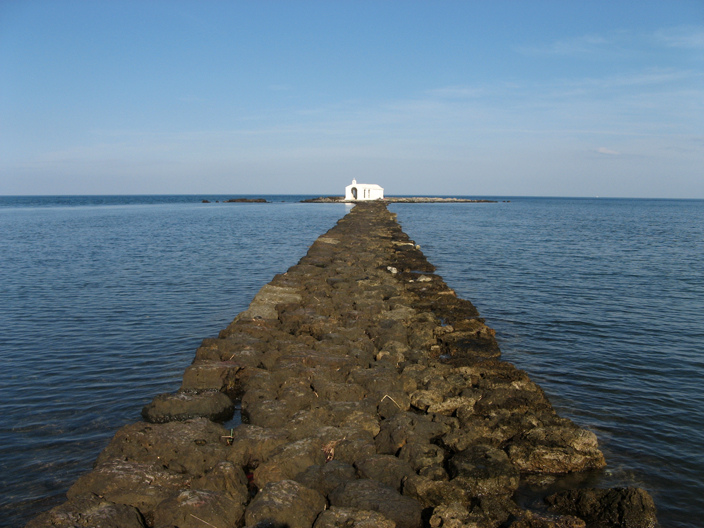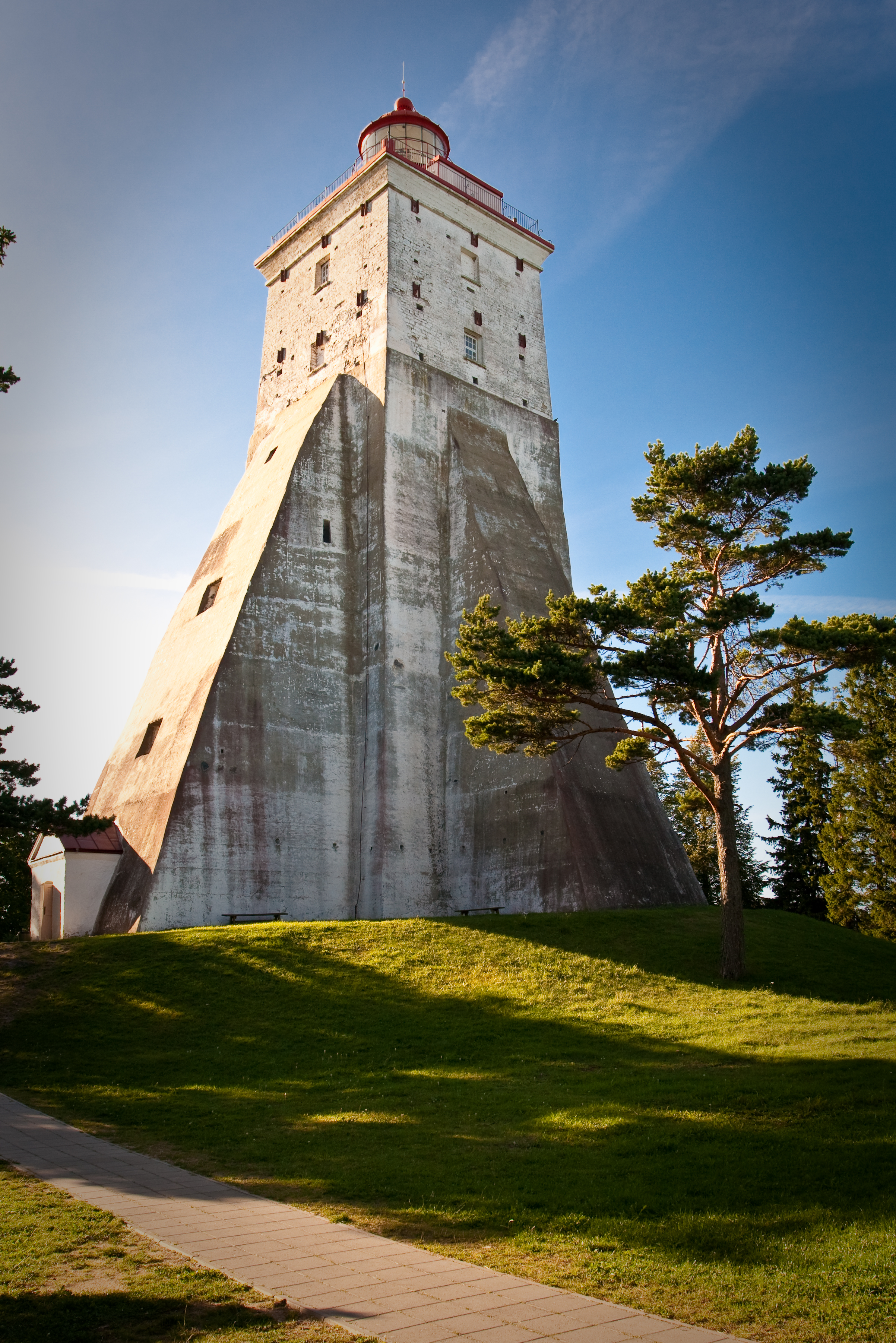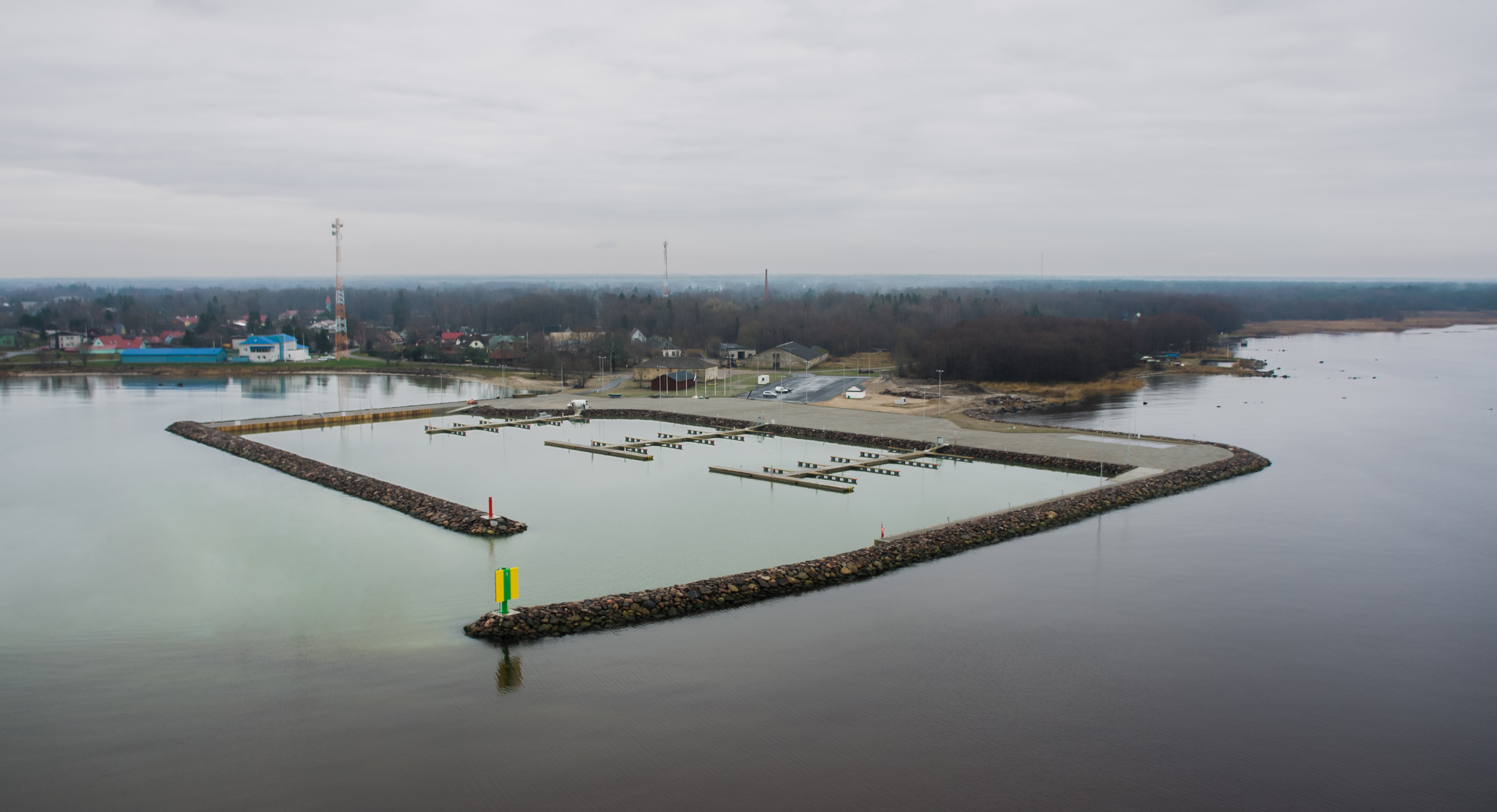|
Georgioupolis
Georgioupoli ( el, Γεωργιούπολη) is a resort village and former municipality in the Chania regional unit, Crete, Greece. Since the 2011 local government reform it is part of the municipality Apokoronas, of which it is a municipal unit. The municipal unit has an area of . It is located east of Chania, about west of Rethymno and about west of Heraklio. It was named after Prince George of Greece, high commissioner of the island in the last years of Ottoman occupation. Geography Georgioupolis is found at the apex of Almiros Bay on the Sea of Crete, with Cape Drapano and its rocky coast to the north and the long sandy beaches towards Rethimno in the east, just away. Three rivers meet the sea at the village; the largest, Almiros, creates a small harbour for fishing and tourist boats. The entrance to the village on the old road from Vrisses is a long avenue of eucalyptus trees. Formerly a small fishing village, Georgioupolis is very much a tourist town now, with many ... [...More Info...] [...Related Items...] OR: [Wikipedia] [Google] [Baidu] |
Chania (regional Unit)
Chania ( el, Περιφερειακή ενότητα Χανίων) is one of the four regional units of Greece, regional units of Crete; it covers the westernmost quarter of the island. Its capital is the city of Chania. Chania borders only one other regional unit: that of Rethymno (regional unit), Rethymno to the east. The western part of Crete is bounded to the north by the Sea of Crete, Cretan Sea, and to the west and south by the Mediterranean Sea. The regional unit also includes the southernmost island of Europe, Gavdos. Geography Chania regional unit, often informally termed 'Western Crete', is a part of the island which includes the districts of Apokoronas, Sfakia, and Selino in the far South West corner. Other towns in the Chania prefecture include Sfakia#Hora Sfakion, Hora Sfakion, Kastelli-Kissamos, Kissamos, Palaiochora, Maleme, Vryses, Vamos, Georgioupolis and Kalives. The natural park of Samariá Gorge, a tourist attraction and a refuge for the rare Cretan wild goat ... [...More Info...] [...Related Items...] OR: [Wikipedia] [Google] [Baidu] |
Prince George Of Greece
Prince George of Greece and Denmark ( el, Γεώργιος; 24 June 1869 – 25 November 1957) was the second son and child of George I of Greece and Olga Konstantinovna of Russia, and is remembered chiefly for having once saved the life of his cousin the future Emperor of Russia, Nicholas II in 1891 during their visit to Japan together. He served as high commissioner of the Cretan State during its transition towards independence from Ottoman rule and union with Greece. Youth From 1883, George lived at Bernstorff Palace near Copenhagen with Prince Valdemar of Denmark, his father's younger brother. The queen had taken the boy to Denmark to enlist him in the Danish royal navy and consigned him to the care of Valdemar, who was an admiral in the Danish fleet. Feeling abandoned by his father on this occasion, George would later describe to his fiancée the profound attachment he developed for his uncle from that day forward. In 1891, George accompanied his cousin the Tsesarevich ... [...More Info...] [...Related Items...] OR: [Wikipedia] [Google] [Baidu] |
Crete
Crete ( el, Κρήτη, translit=, Modern: , Ancient: ) is the largest and most populous of the Greek islands, the 88th largest island in the world and the fifth largest island in the Mediterranean Sea, after Sicily, Sardinia, Cyprus, and Corsica. Crete rests about south of the Greek mainland, and about southwest of Anatolia. Crete has an area of and a coastline of 1,046 km (650 mi). It bounds the southern border of the Aegean Sea, with the Sea of Crete (or North Cretan Sea) to the north and the Libyan Sea (or South Cretan Sea) to the south. Crete and a number of islands and islets that surround it constitute the Region of Crete ( el, Περιφέρεια Κρήτης, links=no), which is the southernmost of the 13 top-level administrative units of Greece, and the fifth most populous of Greece's regions. Its capital and largest city is Heraklion, on the north shore of the island. , the region had a population of 636,504. The Dodecanese are located to the no ... [...More Info...] [...Related Items...] OR: [Wikipedia] [Google] [Baidu] |
Asi Gonia
Asi Gonia ( el, Ασή Γωνιά) is a mountainous village and a former community in the eastern part of the Chania regional unit in Crete, Greece. Since the 2011 local government reform it is part of the municipality Apokoronas, of which it is a municipal unit. The municipal unit has an area of . Asi Gonia is situated east of the Lefka Ori mountain range, 20 km southwest of Rethymno. The communal office is situated in the heart of the community. In the village square there are two statues dedicated to the two Greek prime ministers Eleftherios Venizelos and Sofoklis Venizelos. Historical population Famous natives * George Psychoundakis, resistance fighter and author of '' the Cretan Runner'' * Pavlos Gyparis, infantry Colonel of the Greek army *Andreas Papadakis, infantry Colonel of the Greek army and leader of AEAK *Stylianos Petrakis Stylianos Petrakis ( gr, Στυλιανός Πετράκης) is a Greek naval officer. He serves as Chief of the Hellenic Navy Gene ... [...More Info...] [...Related Items...] OR: [Wikipedia] [Google] [Baidu] |
Sea Of Crete
300px, Map of the Sea of Crete The Sea of Crete (, ''Kritiko Pelagos''), or Cretan Sea, is a sea, part of the Aegean Sea, located in its southern extremity, with a total surface area of . The sea stretches to the north of the island of Crete, east of the islands of Kythera and Antikythera, south of the Cyclades, and west of the Dodecanese islands of Rhodes, Karpathos and Kassos. The bounding sea to the west is the Ionian Sea. To the northwest is the Myrtoan Sea, a subdivision of the Mediterranean Sea that lies between the Cyclades and Peloponnese. To the east-southeast is the rest of the Mediterranean Sea, sometimes credited as the Levantine Sea. Across the island of Crete, to the opposite shore of it begins the Libyan Sea. Ferry routes to and from Piraeus and Heraklion, as well as the southern islands of the Aegean and the Dodecanese, run in this area. Just off the coastline of Northeastern Crete, the sea reaches a maximum depth of near 3,293 m (10,000 ft). Other source ... [...More Info...] [...Related Items...] OR: [Wikipedia] [Google] [Baidu] |
List Of Settlements In The Chania Regional Unit
This is a list of settlements in the Chania regional unit, Greece. * Afrata * Agia Marina * Agia Roumeli * Agia * Agia Eirini * Agios Ioannis * Alikampos * Alikianos * Amygdalokefali * Anopoli * Anoskeli * Aptera * Armenoi * Aroni * Asfendos * Asi Gonia * Askyfou * Chairethiana * Chania * Chora Sfakion * Chordaki * Chrysavgi * Daratsos * Deliana * Drakona * Drakona * Drapanias * Elos * Emprosneros * Epanochori * Episkopi * Faleliana * Fournes * Fres * Fylaki * Galatas * Gavalochori * Georgioupoli * Gerani * Glossa * Gramvousa * Impros * Kaina * Kakodiki * Kakopetros * Kalamitsi * Kalamitsi * Kalathenes * Kallergiana * Kaloudiana * Kalydonia * Kalyves * Kamisiana * Kampanos * Kampoi * Kampos * Kandanos * Karanos * Kares, Apokoronas * Kares, Platanias * Kastellos * Kefalas * Kefali * Kissamos * Kokkino Chorio * Kolymvari * Kontomari * Kontopoula * Koufos * Koukounara * Koulkouthiana * Kounoupidiana * Kournas * Kypari ... [...More Info...] [...Related Items...] OR: [Wikipedia] [Google] [Baidu] |
Estonia
Estonia, formally the Republic of Estonia, is a country by the Baltic Sea in Northern Europe. It is bordered to the north by the Gulf of Finland across from Finland, to the west by the sea across from Sweden, to the south by Latvia, and to the east by Lake Peipus and Russia. The territory of Estonia consists of the mainland, the larger islands of Saaremaa and Hiiumaa, and over 2,200 other islands and islets on the eastern coast of the Baltic Sea, covering a total area of . The capital city Tallinn and Tartu are the two largest urban areas of the country. The Estonian language is the autochthonous and the official language of Estonia; it is the first language of the majority of its population, as well as the world's second most spoken Finnic language. The land of what is now modern Estonia has been inhabited by '' Homo sapiens'' since at least 9,000 BC. The medieval indigenous population of Estonia was one of the last " pagan" civilisations in Europe to adopt Ch ... [...More Info...] [...Related Items...] OR: [Wikipedia] [Google] [Baidu] |
Hiiumaa
Hiiumaa (, ) is the second largest island in Estonia and is part of the West Estonian archipelago, in the Baltic Sea. It has an area of 989 km2 and is 22 km from the Estonian mainland. Its largest town is Kärdla. It is located within Hiiu County. Names Hiiumaa is the main island of Hiiu County, called or in Estonian. The Swedish and German name of the island is or ('Day' island) and in Danish. In modern Finnish, it is called , literally 'Hiisi's Land'. In Russian it is known as (). In Old Gutnish, it was ('day isthmus'), from which the local North Germanic name is derived. History Prehistory Hiiumaa emerged from the Baltic Sea 8500 years ago due to isostatic uplift after the retreat of the ice cap. Mesolithic settlements are found on the island's Kõpu Peninsula from about 5500 BC. These settlements seem to be related mostly to seal hunting and extend into the earliest Neolithic. As Hiiumaa is constantly uplifting the local sea level was 20 m higher ... [...More Info...] [...Related Items...] OR: [Wikipedia] [Google] [Baidu] |
Kärdla
Kärdla (; sv, ; german: Kertel) is the only town on the island of Hiiumaa, Estonia. It is the capital of Hiiu County and the administrative center of Hiiumaa Parish. Geography Kärdla is located on the northeastern coast of Hiiumaa, by the Tareste Bay; to the southeast of the town lies the 455 million year old Kärdla meteorite crater. Several small rivers flow through the town. There are also artesian wells in Kärdla. The Swedish name ''Kärrdal'' means "marsh valley"; the town is located in a lowlands valley. History Kärdla was first mentioned in 1564 as a village inhabited by Swedes. Its growth was greatly influenced by the cloth factory founded in 1830. A port was built in 1849. Both the port and the factory were destroyed in World War II. Kärdla officially became a borough in 1920, and a town in 1938. In 2013 the town was merged with Kõrgessaare Parish to establish Hiiumaa Parish, therefore Kärdla lost its municipality status. Population Transport Road transp ... [...More Info...] [...Related Items...] OR: [Wikipedia] [Google] [Baidu] |
Twin Towns And Sister Cities
A sister city or a twin town relationship is a form of legal or social agreement between two geographically and politically distinct localities for the purpose of promoting cultural and commercial ties. While there are early examples of international links between municipalities akin to what are known as sister cities or twin towns today dating back to the 9th century, the modern concept was first established and adopted worldwide during World War II. Origins of the modern concept The modern concept of town twinning has its roots in the Second World War. More specifically, it was inspired by the bombing of Coventry on 14 November 1940, known as the Coventry Blitz. First conceived by the then Mayor of Coventry, Alfred Robert Grindlay, culminating in his renowned telegram to the people of Stalingrad (now Volgograd) in 1942, the idea emerged as a way of establishing solidarity links between cities in allied countries that went through similar devastating events. The comradeship ... [...More Info...] [...Related Items...] OR: [Wikipedia] [Google] [Baidu] |
Argyroupoli (Rethymno)
Argyroupoli ( el, Αργυρούπολη) is a village in the municipality of Lappa, Rethymno regional unit, Crete, Greece, with a population of 403 (2011 census) and an altitude of 260 m. It was previously known as Lappa or Lampa, Stimboli, and Polis. Name It is the site of the ancient city (polis) of Lappa. In the Middle Ages, it was named ''Stimpoli(s)'' by reinterpretation as a single word ("in the city"), later simply ''Polis''. Until 1669, the name Αργυρούπολις 'Silver City' was used. In the seventeenth century, it was also called facetiously Σαμαρόπολις, Γαϊδαρόπολις 'donkey city', or Γαϊδουρόπολις. From 1868-1878, it was called Stambólköj in Turkish (that is, 'Stambol village'). The name Αργυρούπολις or Αργυρόπολις was revived in 1878. The name of the municipality of Lappa of which it is a part is a revival of the ancient name for the city. History Lappa was probably a colony of Tarrha. It was ... [...More Info...] [...Related Items...] OR: [Wikipedia] [Google] [Baidu] |




.jpg)
